The first planting of Norway spruce in Ireland “was at the beginning of the 18th century or even earlier,” wrote HM Fitzpatrick in The Forests of Ireland (1965). The most important commercial tree species in Europe, it is not native to Ireland and Britain where it failed to colonise naturally after the last Ice Age.
Its natural range extends from the Alps across Central Europe, up to Scandinavia and across to western Russia to merge with Siberian spruce in the Ural Mountains where hybrids between the two species are found.
While Fitzpatrick believed that it might have been introduced to Ireland in the late 1600s, “reintroduced” is probably a more accurate word because there is evidence of spruce in Ireland dating to the Gortian Warm Stage (named after excavations near Gort), which is an interglacial period estimated at between 300,000 and 425,000 years ago. Frank Mitchell and Michael Ryan maintained in Reading the Irish Landscape that common tree and shrub species during this period such as fir, spruce, hornbeam, box and rhododendron disappeared from the Irish landscape long before the last Ice Age.
It was planted as a forest tree during the Dublin Society afforestation scheme from the mid 19th century and possibly earlier. In a letter to Henry John Elwes – co-author of The Trees of Great Britain & Ireland – AC Forbes wrote around 1812 that he discovered a quality stand of 80-year-old “common spruce, growing in Glenshiskin Wood” near Kilworth, Co Cork.
It was widely planted, in Ireland up to 1934, when it formed 34% of planting programmes, decreasing to 20% in the late 1940s and falling gradually to 2% by the 1980s. Today it forms less than 4% of the forest estate – Coillte and private.
Grants and premiums
Norway spruce has been overshadowed by its North American cousin Sitka spruce for almost 70 years but this might be about to change. There is some evidence of renewed interest in Norway and the recent increased State grants and premiums for mixed diverse conifer forests may help a revival in planting.
The new establishment grant for Norway and other diverse conifers is now €4,452/ha compared with €3,858/ha for Sitka.
While forestry companies regard these grant rates as too low, the annual premium rate for Norway is attractive. It is now €863/ha – up from €590 – compared with €746/ha for Sitka – up from €510.
Both carry a 20% broadleaf element but this new differential provides a farmer with a cumulative income of €17,260/ha for Norway over 20 years, which is €2,340/ha greater than Sitka spruce.
However, an attractive premium isn’t the main criterion for species selection as Norway spruce is judged on its overall performance, especially against reliable, high-yielding and market-friendly Sitka. In this regard it compares well as a forest tree.
Resilience
Norway spruce has similar resistance to insect pest and disease damage as most conifers. It suffers from green spruce aphid defoliation but recovers. It is also susceptible to butt-rot which is not unusual in many conifers.
It can suffer from top-dying, which according to a 1991 Coillte information note occurs after the removal of side shelter. Heavy thinning, especially during prolonged dry conditions in spring and summer or sudden exposure of trees after road making or clearfelling of adjoining crop can cause top-dying. Although not fully resistant to late spring frosts, it is much more resilient than Sitka. While frost damage was a rare occurrence in the past – once in seven years – it is now more frequent as in back to back years of 2020 and 2021. Norway may be worth exploring in low-lying frost-prone sites, with Sitka being planted in upland more exposed areas.
Like Sitka, Norway has a shallow rooting system and requires a sufficient supply of soil moisture.
Ideally, it should be planted on well-drained moist soils, including heavy clays and gleys, although it will perform well on moderately fertile soils including old woodland sites, but Sitka is better suited to low-nutrient soils and exposed sites.
Production and markets
On similar sites Sitka spruce outperforms Norway in yield class (YC). The differential can be as high as YC4 (m3/ha/annum). When the age of maximum mean annual increment (MMAI) – less 30% – is factored in, YC24 Sitka is clearfelled aged 30 while YC20 Norway will be at least 40 years old. However, on good mineral moist soils the age of MMAI may be less.
Norway spruce has a diverse range of end uses, from the tone wood of violins and cellos – sourced in the northern Italian Alps – to mass wood for buildings as high as 80m in Austria and Norway. It is highly valued by sawmillers and woodworkers as a smooth, easily worked timber suitable for interior joinery unlike Sitka, which is coarser. Stakewood produced from early thinning of Norway tends to be more brittle than Sitka but as both species mature to the large sawlog phase, they are in wide demand for construction. There is some evidence that sawmill rejection rates are less for Norway large sawlog than Sitka when mechanically graded.
As timber supply increases in Ireland and as we rely more on exports, Norway will find a ready market not only in the UK but also in Europe where architects, engineers and builders are familiar with the species. It is widely specified as sawn wood for timber frame houses or engineered into cross laminated timber (CLT) and glulam as a major medium – to high-rise mass timber construction material.
Non-wood aspects
In comparison to Sitka, Norway is marginally more conducive to ground vegetation cover although both are intolerant of competition from the thicket stage when the canopy closes. Ground vegetation increases as Norway matures, especially if allowed to grow on to or exceed maximum mean annual increment (MMAI) age.
The Woodland Trust acknowledges it as providing “a habitat for a variety of wildlife, including beetles, weevils and hoverflies” while “caterpillars of a number of moth species feed on the foliage, including the spruce carpet, cloaked pug, dwarf pug and barred red”.
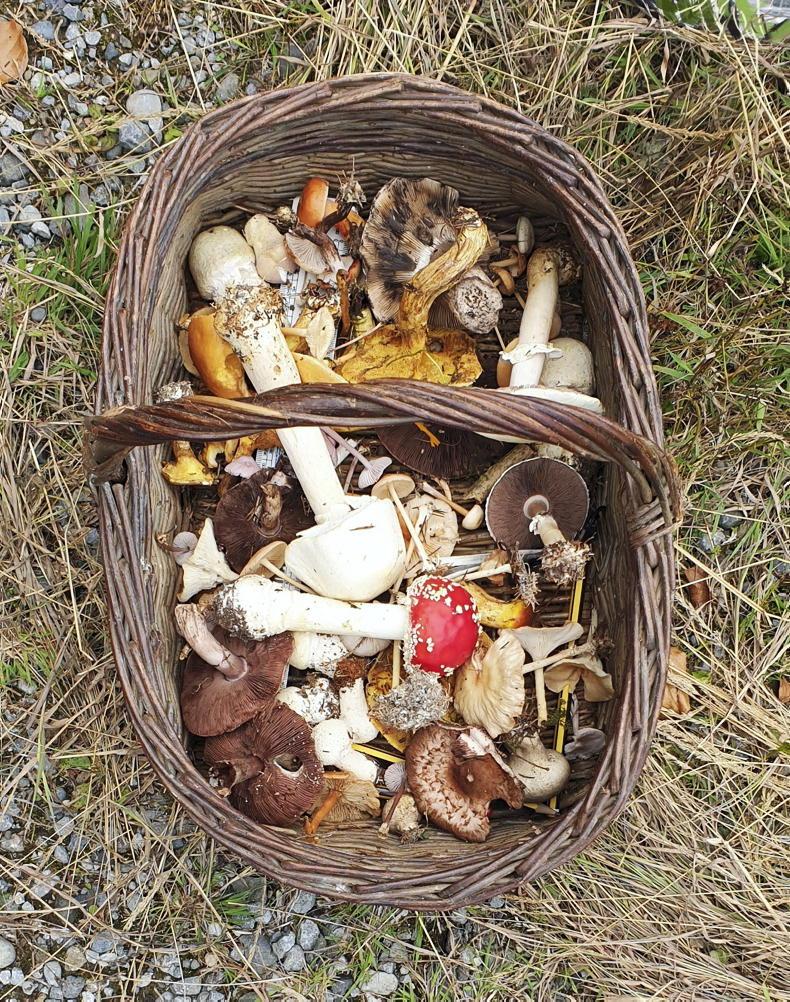
Foragers collected 37 different species of mushrooms during a field day in the Norway spruce dominate forest. \Donal Whelan
Norway spruce provides a rich variety of mushroom species. During a field day this year in the Norway spruce dominated Clonad Forest, Co Offaly, foragers collected 37 different species of mushrooms.
Norway spruce has potential as a major forest tree in Ireland as it is in Europe, either pure or in combination with a minimum of the mandatory 20% broadleaf species and 10% open biodiverse areas.
The first planting of Norway spruce in Ireland “was at the beginning of the 18th century or even earlier,” wrote HM Fitzpatrick in The Forests of Ireland (1965). The most important commercial tree species in Europe, it is not native to Ireland and Britain where it failed to colonise naturally after the last Ice Age.
Its natural range extends from the Alps across Central Europe, up to Scandinavia and across to western Russia to merge with Siberian spruce in the Ural Mountains where hybrids between the two species are found.
While Fitzpatrick believed that it might have been introduced to Ireland in the late 1600s, “reintroduced” is probably a more accurate word because there is evidence of spruce in Ireland dating to the Gortian Warm Stage (named after excavations near Gort), which is an interglacial period estimated at between 300,000 and 425,000 years ago. Frank Mitchell and Michael Ryan maintained in Reading the Irish Landscape that common tree and shrub species during this period such as fir, spruce, hornbeam, box and rhododendron disappeared from the Irish landscape long before the last Ice Age.
It was planted as a forest tree during the Dublin Society afforestation scheme from the mid 19th century and possibly earlier. In a letter to Henry John Elwes – co-author of The Trees of Great Britain & Ireland – AC Forbes wrote around 1812 that he discovered a quality stand of 80-year-old “common spruce, growing in Glenshiskin Wood” near Kilworth, Co Cork.
It was widely planted, in Ireland up to 1934, when it formed 34% of planting programmes, decreasing to 20% in the late 1940s and falling gradually to 2% by the 1980s. Today it forms less than 4% of the forest estate – Coillte and private.
Grants and premiums
Norway spruce has been overshadowed by its North American cousin Sitka spruce for almost 70 years but this might be about to change. There is some evidence of renewed interest in Norway and the recent increased State grants and premiums for mixed diverse conifer forests may help a revival in planting.
The new establishment grant for Norway and other diverse conifers is now €4,452/ha compared with €3,858/ha for Sitka.
While forestry companies regard these grant rates as too low, the annual premium rate for Norway is attractive. It is now €863/ha – up from €590 – compared with €746/ha for Sitka – up from €510.
Both carry a 20% broadleaf element but this new differential provides a farmer with a cumulative income of €17,260/ha for Norway over 20 years, which is €2,340/ha greater than Sitka spruce.
However, an attractive premium isn’t the main criterion for species selection as Norway spruce is judged on its overall performance, especially against reliable, high-yielding and market-friendly Sitka. In this regard it compares well as a forest tree.
Resilience
Norway spruce has similar resistance to insect pest and disease damage as most conifers. It suffers from green spruce aphid defoliation but recovers. It is also susceptible to butt-rot which is not unusual in many conifers.
It can suffer from top-dying, which according to a 1991 Coillte information note occurs after the removal of side shelter. Heavy thinning, especially during prolonged dry conditions in spring and summer or sudden exposure of trees after road making or clearfelling of adjoining crop can cause top-dying. Although not fully resistant to late spring frosts, it is much more resilient than Sitka. While frost damage was a rare occurrence in the past – once in seven years – it is now more frequent as in back to back years of 2020 and 2021. Norway may be worth exploring in low-lying frost-prone sites, with Sitka being planted in upland more exposed areas.
Like Sitka, Norway has a shallow rooting system and requires a sufficient supply of soil moisture.
Ideally, it should be planted on well-drained moist soils, including heavy clays and gleys, although it will perform well on moderately fertile soils including old woodland sites, but Sitka is better suited to low-nutrient soils and exposed sites.
Production and markets
On similar sites Sitka spruce outperforms Norway in yield class (YC). The differential can be as high as YC4 (m3/ha/annum). When the age of maximum mean annual increment (MMAI) – less 30% – is factored in, YC24 Sitka is clearfelled aged 30 while YC20 Norway will be at least 40 years old. However, on good mineral moist soils the age of MMAI may be less.
Norway spruce has a diverse range of end uses, from the tone wood of violins and cellos – sourced in the northern Italian Alps – to mass wood for buildings as high as 80m in Austria and Norway. It is highly valued by sawmillers and woodworkers as a smooth, easily worked timber suitable for interior joinery unlike Sitka, which is coarser. Stakewood produced from early thinning of Norway tends to be more brittle than Sitka but as both species mature to the large sawlog phase, they are in wide demand for construction. There is some evidence that sawmill rejection rates are less for Norway large sawlog than Sitka when mechanically graded.
As timber supply increases in Ireland and as we rely more on exports, Norway will find a ready market not only in the UK but also in Europe where architects, engineers and builders are familiar with the species. It is widely specified as sawn wood for timber frame houses or engineered into cross laminated timber (CLT) and glulam as a major medium – to high-rise mass timber construction material.
Non-wood aspects
In comparison to Sitka, Norway is marginally more conducive to ground vegetation cover although both are intolerant of competition from the thicket stage when the canopy closes. Ground vegetation increases as Norway matures, especially if allowed to grow on to or exceed maximum mean annual increment (MMAI) age.
The Woodland Trust acknowledges it as providing “a habitat for a variety of wildlife, including beetles, weevils and hoverflies” while “caterpillars of a number of moth species feed on the foliage, including the spruce carpet, cloaked pug, dwarf pug and barred red”.

Foragers collected 37 different species of mushrooms during a field day in the Norway spruce dominate forest. \Donal Whelan
Norway spruce provides a rich variety of mushroom species. During a field day this year in the Norway spruce dominated Clonad Forest, Co Offaly, foragers collected 37 different species of mushrooms.
Norway spruce has potential as a major forest tree in Ireland as it is in Europe, either pure or in combination with a minimum of the mandatory 20% broadleaf species and 10% open biodiverse areas.






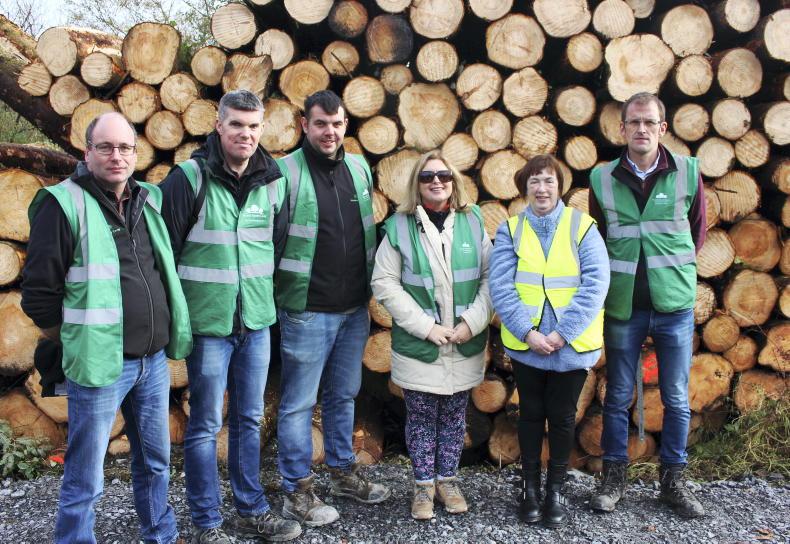
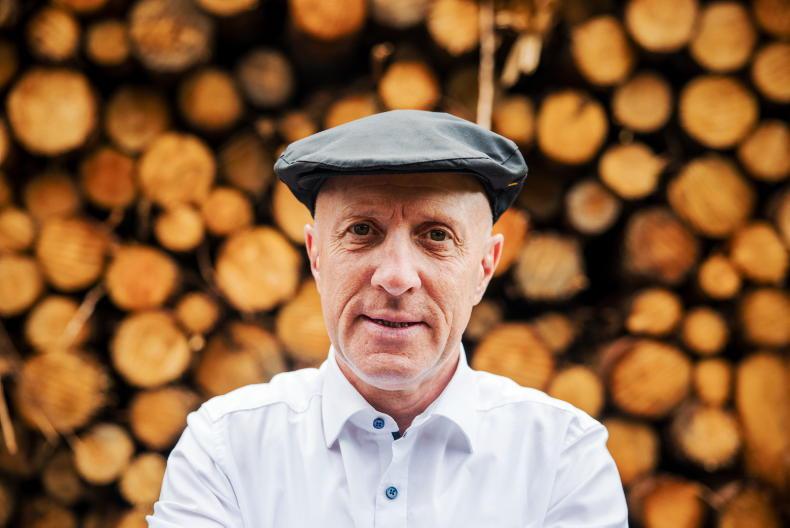
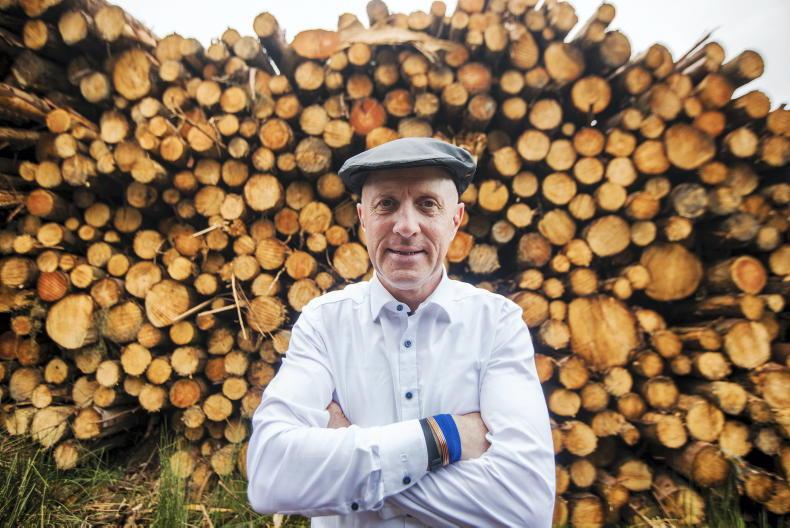
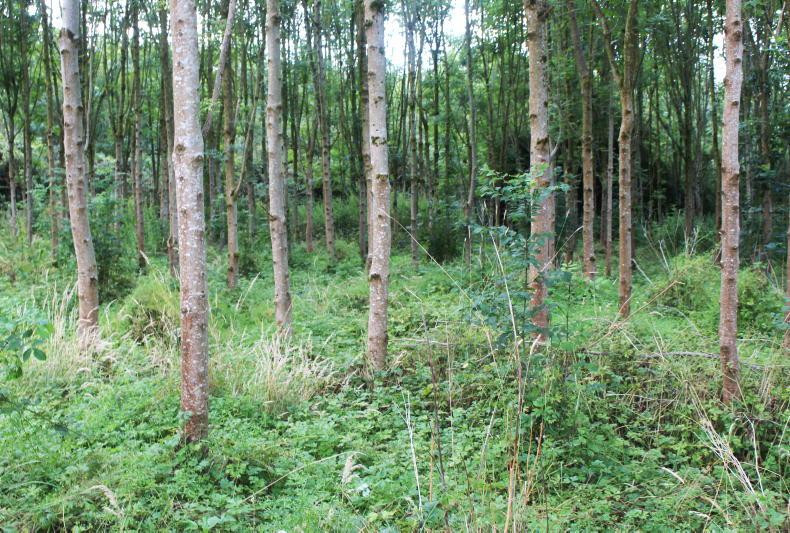
SHARING OPTIONS